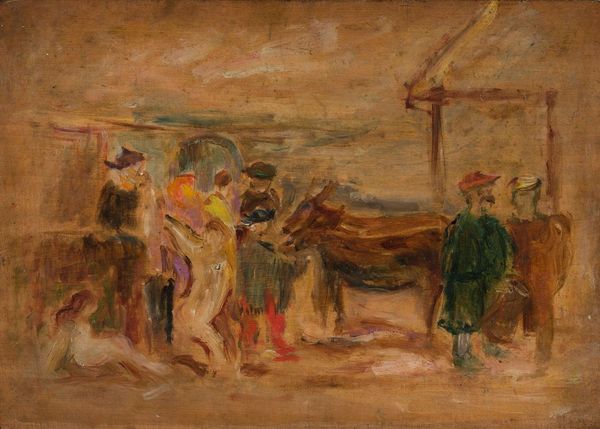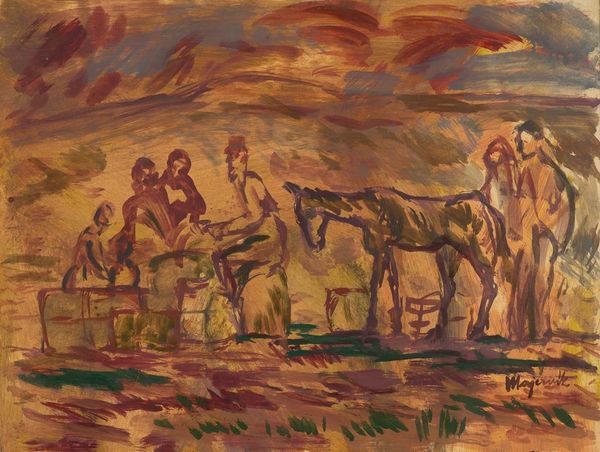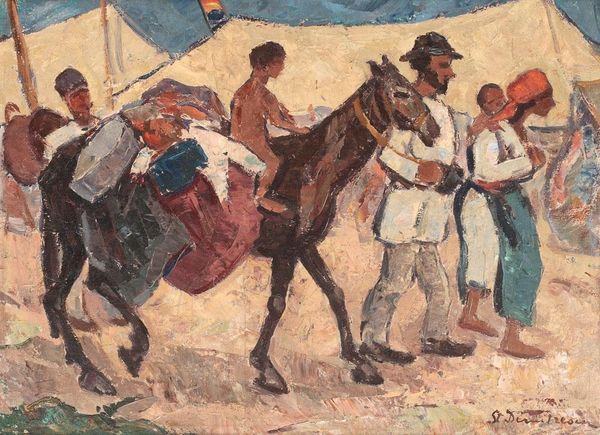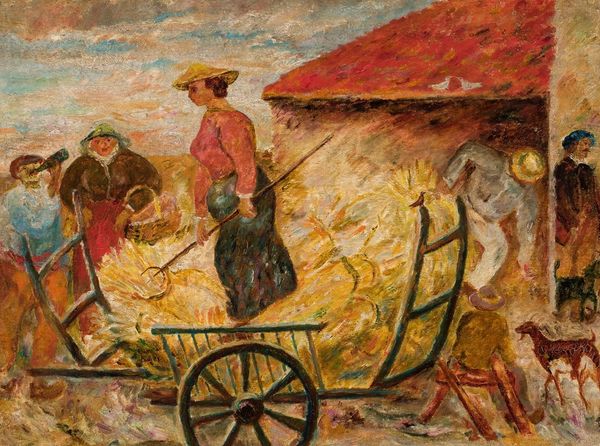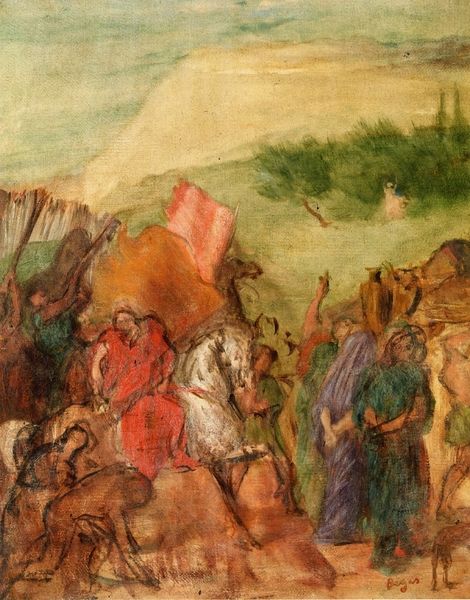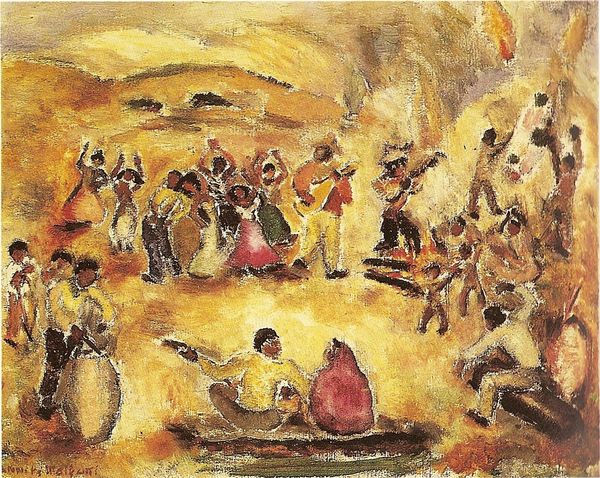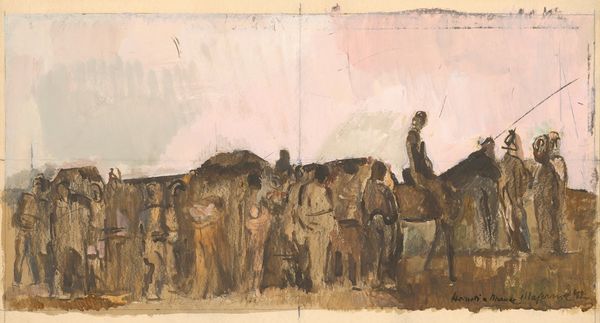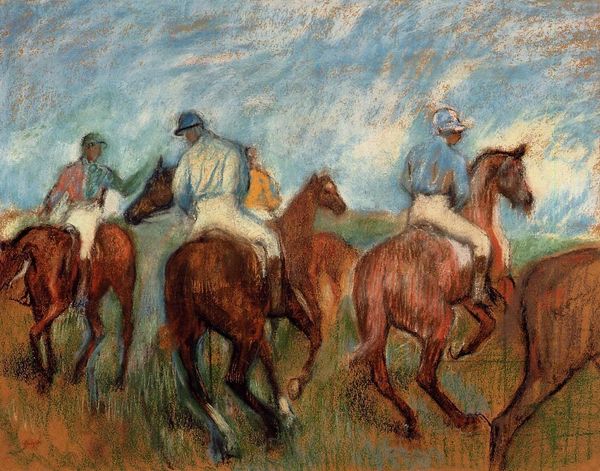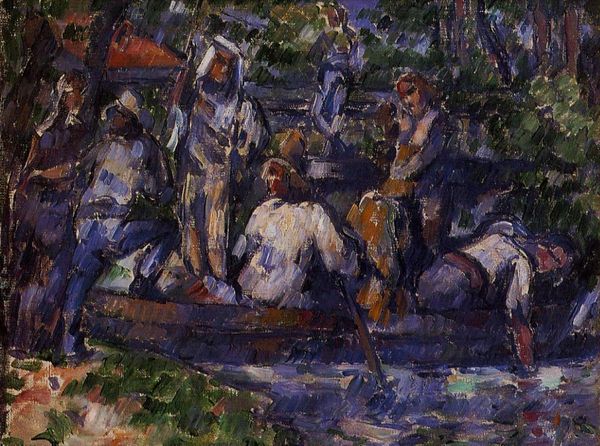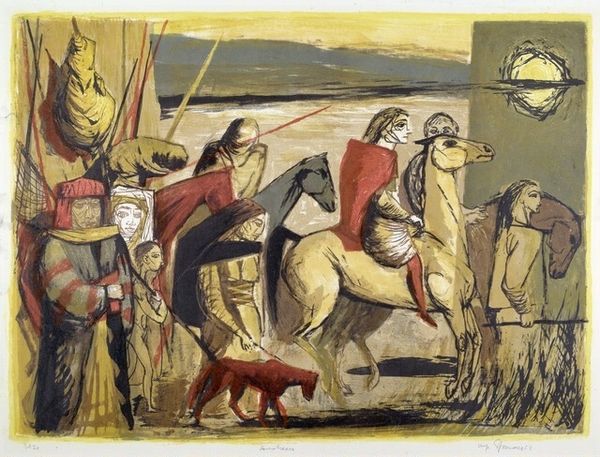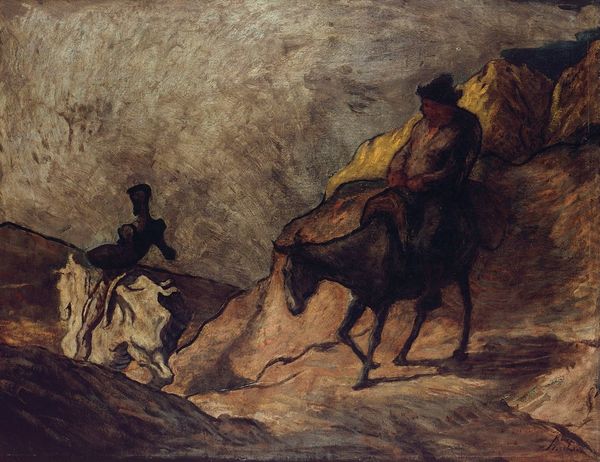
painting, oil-paint
#
figurative
#
narrative-art
#
painting
#
oil-paint
#
figuration
#
oil painting
#
genre-painting
#
modernism
Copyright: Public Domain: Artvee
Curator: This oil painting, completed in 1920, is entitled "Good Samaritan," and was created by Tadeusz Makowski. The Biblical theme feels surprisingly modern, wouldn't you agree? Editor: Indeed, it has this... earthy tonality. Muted browns, greens, and ochres create a sense of hardship and almost a pastoral gloom. It really subverts the expectations I had for such a story. Curator: Well, let’s unpack that a little. Makowski lived through World War I and much of his work, while seemingly naïve, reflects a deep engagement with social inequalities and human suffering. This genre painting really is no exception, illustrating as it does, this specific parable from the New Testament. Editor: Right, and looking at the composition, it strikes me how off-kilter everything is. The windmill in the background looms large and threatening, while the figures are huddled together, almost afraid to be seen aiding the injured man. There's none of that golden light, Renaissance glory you might expect. The asymmetry makes me think this is as much about social responsibility as it is spiritual redemption. Curator: Precisely. Makowski wasn’t interested in easy answers or idealised virtue. The painting’s modernity lies in its interrogation of what goodness truly entails in the face of indifference and even outright hostility. Who is considered to be "good" versus the reality of ethical failures within structural injustice. The painting is making an argument against the social grain of his time. Editor: It also seems to avoid traditional symbols in favor of representing social bonds through gestural expression and figurative arrangement. I love how those subtle interactions highlight this concept of solidarity. Curator: It does, and understanding his position in Polish society allows us to understand this visual rhetoric of critique even more powerfully. What does a good neighbour actually do? What actions might make someone worthy of praise or blame? Makowski uses these somewhat crude, caricatured figures, almost doll-like, to point us in the right direction toward answering the questions. Editor: In a way, I find the rawness quite fitting. Curator: Me too! It gives the scene a disquieting edge. Editor: Well, considering Makowski’s subversive commentary, maybe its art-historical awkwardness can be read as its greatest strength! Curator: I hadn't considered that... but it's a valid point. Certainly a testament to its continued relevance.
Comments
No comments
Be the first to comment and join the conversation on the ultimate creative platform.
